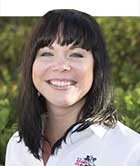Growing up on a small dairy farm, silage effluent wasn't something I was overly aware of other than it smelled, and I tried not to get it on my boots and carry the scent around with me all day. However, after working for a large dairy farm later in life and learning in greater detail and scale about dairy waste management, my eyes continue to open to the magnitude of areas each farmer has to be aware of.
Why write about silage effluent in the middle of winter you might be asking. I believe a little preplanning this spring for grass filter strips, diverting effluent into a collection area or cautious planning to incorporate your effluent into liquid manure storage will get you ahead of the game.
Effluent pollution should be taken seriously, given that it is 100 times as strong as raw sewage. Each farm needs to look at its treatment plan on an individual basis. According to Penn State Extension's John Tyson, a few items can help reduce and manage effluent application:
The author , Ali Enerson, was the special publications editor, responsible for books, plans, distribution of the e-newsletter and various internal communication pieces. She grew up on a 60-cow dairy in northwest Wisconsin, and is a graduate of University of Wisconsin–Madison with a degree in life sciences communications.
Why write about silage effluent in the middle of winter you might be asking. I believe a little preplanning this spring for grass filter strips, diverting effluent into a collection area or cautious planning to incorporate your effluent into liquid manure storage will get you ahead of the game.
Effluent pollution should be taken seriously, given that it is 100 times as strong as raw sewage. Each farm needs to look at its treatment plan on an individual basis. According to Penn State Extension's John Tyson, a few items can help reduce and manage effluent application:
- Try to minimize the amount produced by ensiling at dry matter content of 30 percent.
- When land applying to a growing crop, typically diluting with water at a 1-to-1 ratio is best so you don't have vegetation burn.
- You can also directly apply to a field with nongrowing crops.

The author , Ali Enerson, was the special publications editor, responsible for books, plans, distribution of the e-newsletter and various internal communication pieces. She grew up on a 60-cow dairy in northwest Wisconsin, and is a graduate of University of Wisconsin–Madison with a degree in life sciences communications.








